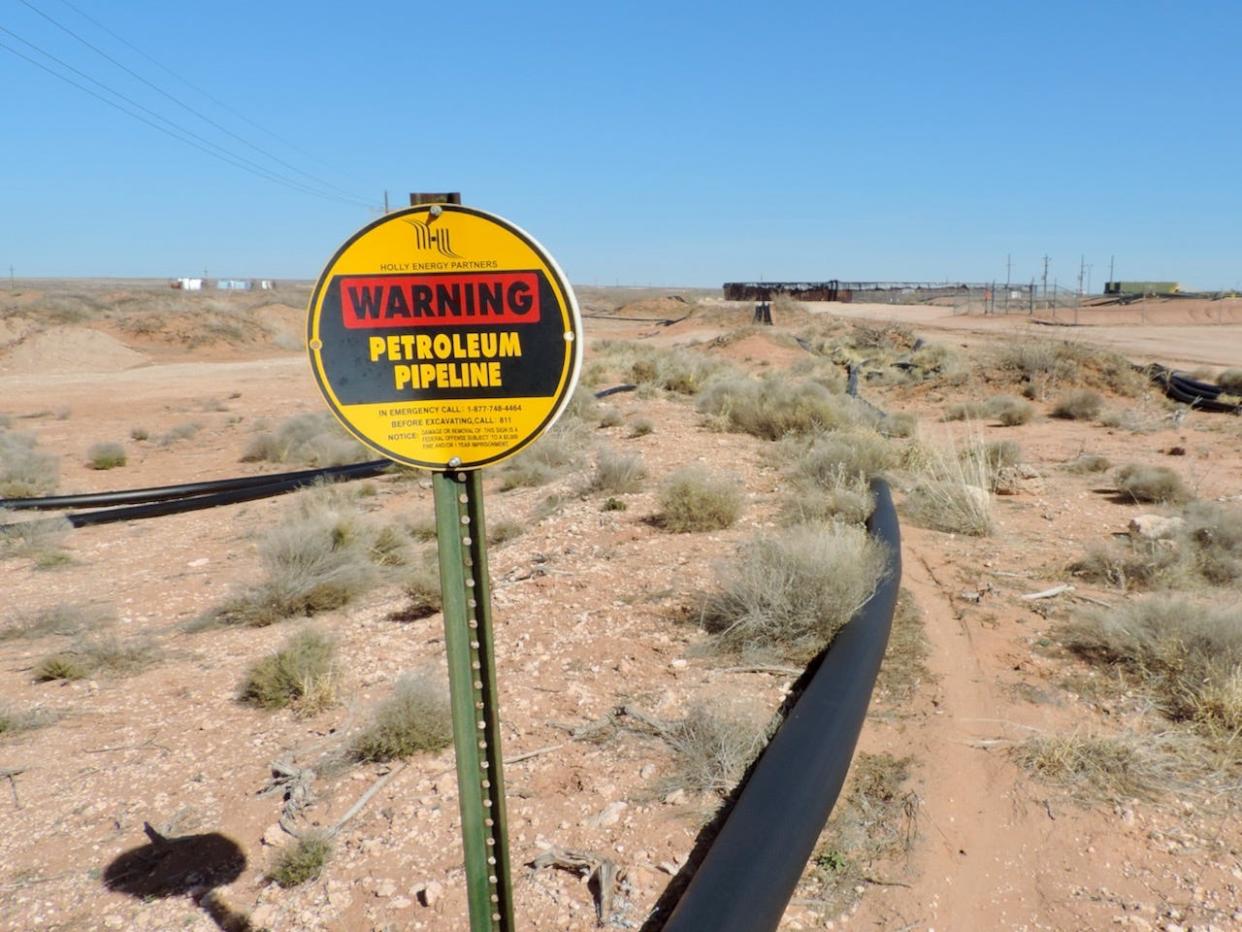$455 million deal by Kimbell Royalty Partners latest in Permian Basin oil boom

An oil and gas company headquartered in Fort Worth, Texas is planning to buy thousands of acres in the Permian Basin as part of an almost half-billion-dollar acquisition, the latest in a continual trend of large land sales in the region’s fossil fuel industry.
Kimbell Royalty Partners said on Aug. 2 it planned to pay $455 million for oil and gas royalty interests, mostly in the Permian and in the Mid-Continent Basin, including more than 4,000 producing wells on more than 1 million acres.
About 64 percent of the reserve value was in the Permian, according to a company announcement, with 36 percent in the Mid-Continent.
More: Carlsbad's Missi Currier taps into her roots to lead New Mexico Oil and Gas Association
In the Permian, within the western Delaware sub-basin along the Texas-New Mexico State Line, Kimbell will acquire 13,477 acres in the sale, mostly in Loving County, Texas, with 57 percent of the acreage undeveloped.
Assets also included 300 drilled but uncompleted wells and 11 active drilling rigs.
In the eastern Midland sub-basin, Kimbell also planned to acquire 920 locations with acreage in Midland and Martin counties.
More: Oil and gas companies ramp up plans for Permian Basin production in New Mexico and Texas
Chief Executive Officer Bob Ravnass said in a statement to investors that the deal was intended to consolidate known oil and gas assets in the region.
This was the latest in a trend following the historic drop in oil prices and production amid the COVID-19 pandemic that saw companies opting for adding known oil and gas properties to their portfolios rather than seeking out new lands.
More: How is New Mexico influencing federal oil and gas air pollution policy?
“The Acquisition represents the largest transaction in company history and is expected to significantly enhance Kimbell's positions in the best-performing, highest-growth oil and gas basins in the Lower 48,” Ravnass said. “We expect the Acquisition to be immediately accretive to distributable cash flow per unit, with accelerated accretion anticipated in future years, and look forward to continuing our role as a major consolidator in the oil and natural gas royalty sector.”
Meanwhile, global energy giant Chevron said it completed a previously announced acquisition of PDC Energy that includes 25,000 producing acres in the Permian, along with 275,000 acres in the Denver-Julesberg Basin.
That $7.6 billion sale was announced in May and Chevron said it was completed Monday.
More: Oil demand to peak by 2033, followed by declining production in New Mexico, officials say
“PDC’s high-quality assets open up even greater opportunities in important U.S. basins where Chevron already has a strong presence,” said Bruce Niemeyer, Chevron president for Americas Exploration and Production.
These latest deals came as the Permian Basin continued to lead U.S. shale basins in production at about 5.8 million barrels of oil per day (bopd) forecast in August by the Energy Information Administration, with a slight dip of 11,000 bopd expected from July.
The region was also leading the U.S. in drilling rigs with 329 reported in the Permian on Friday, according to Baker Hughes, marking a five-rig drop from a week ago.
More: $75M oil and gas deal announced in Permian Basin as region leads US in production
New Mexico added two rigs for its total of 113 as of Friday, records show, as Texas dropped eight rigs for its total of 314.
Texas and New Mexico had the first- and second-highest rig counts among U.S. states, according to the report.
The growth followed reports of some of the highest oil prices of the year, as the Chicago Mercantile Exchange reported domestic oil trading at about $82 a barrel on Monday.
More: What we know about federal plan to restrict oil and gas drilling from New Mexico caves
That rivaled the highest price of the year at $83 a barrel reported on April 12, according to historical data provided by Nasdaq.
That could mean companies will increase efforts to seek out new oil and gas deposits throughout the world and in active regions like the Permian Basin in the coming years, read a report from international energy analysis firm Rystad Energy.
The report showed spending by the industry on conventional oil and gas exploration activities was expected to be at more than $50 billion by the end of the year — the highest since 2019.
More: Oil and gas industry in New Mexico could see higher land rates under federal proposal
But despite the highest spending, Rystad reported actual oil and gas discoveries were on the decline.
In the first half of 2023, Rystad reported 2.6 billion barrels of oil equivalent (boe) were discovered, compared with 4.5 billion boe during the same period of 2022.
Discoveries so far this year averaged 47 million boe each, while last year they averaged 56 million boe per discovery.
“Upstream companies are facing a period of uncertainty. They are eager to capitalize on the increased demand for fossil fuels and find additional resources, but recent results have been lackluster,” said Aatisha Mahajan, Rystad Vice President of Upstream Research.
“If exploration efforts continue to yield unimpressive results for the remainder of the year, 2023 could be a record-breaker for the wrong reasons," Mahajan said.
Adrian Hedden can be reached at 575-628-5516, achedden@currentargus.com or @AdrianHedden on Twitter.
This article originally appeared on Carlsbad Current-Argus: $455 million deal latest in Permian Basin oil and gas boom

